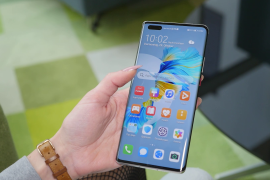The “curiosity” on Twitter is pretty modest: The team there describes the robot as “NASA’s friendly neighborhood rover on Mars” — with more than 4.3 million fans on the social platform alone giving an idea that “Curiosity” is far more . The rover, which landed ten years ago on Saturday (August 6), inspired researchers and fans around the world with its scientific explorations of the Red Planet, bolstered NASA’s image – and laid the foundation for the further development of Mars exploration. These were the original goals of “Curiosity”. “Curiosity” has long achieved mission goals originally set by NASA: Roll through Gale Crater on Mars for two years? Complete. Evidence that life was once possible on the Red Planet? Complete. The duration of the mission has been officially extended to three years, but is unofficially already listed as “as long as possible”. Although there are always minor problems, especially with the wheels, the rover has been “sturdyly built” and – whatever it is – in good condition, according to his team. The fact is that the arrival of “Curiosity” on Mars – after six years of development, costing about two billion euros, eight months of flight through space and a complex landing maneuver – worked out so smoothly, control ten years earlier. At the center was Pasadena, California, to applause and applause and tears of joy. “It looks like we are at the Olympics,” said Charles Elachi, the director of the control center at the time. “And this team just won the gold medal.” The then US President Barack Obama described the landing as an “unprecedented technological achievement”. “Today the United States made history on Mars.” The First Images Reach Earth , Later, the nuclear-powered rover began rolling in, sending more and more high-resolution photos and deploying its scientific instruments. For example, “Curiosity” can take soil samples and analyze them in its laboratory. The rover also has several cameras, a laser, a weather station, a radiation meter and a hydrogen detection instrument on board. Meanwhile, “Curiosity” has already sent nearly a million images to Earth – and helped science make many discoveries. At the start of the mission, NASA promised “discoveries beyond our imagination.” The successor to “Perseverance” is the “Curiosity 2.0.” The rover is – also thanks to a sophisticated and award-winning social media strategy – still popular with the public, but technically already out of date. In November, the stationary lander “Insight” reached Mars, last year the rover “Persistence” (staying power), which is a variant of “Curiosity 2.0”. “Perseverance” records sound and video, even carries a small helicopter with it and should send a sample from Mars back to Earth. The two rovers are not competitors, but complement each other, stresses NASA – and recently “Curiosity” wrote to “Perseverance” via Twitter: “To find new ways of understanding our universe from me.” Thanks for joining. Exploring unknown territory is a little easier when you know that a friend shares the same world.”

Internet fan. Alcohol expert. Beer ninja. Organizer. Certified tv specialist. Explorer. Social media nerd.





